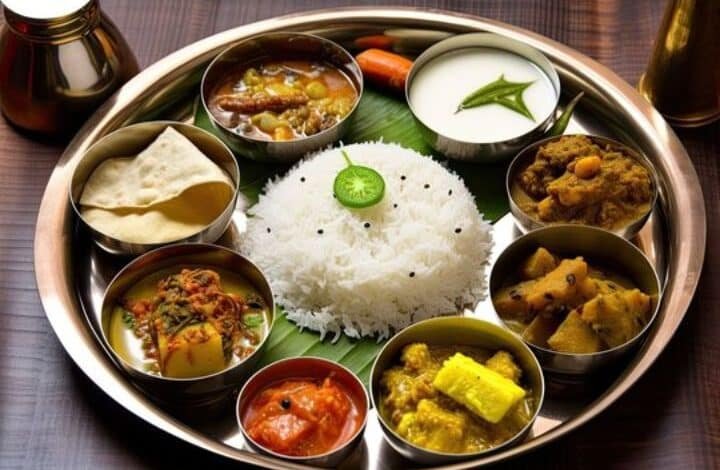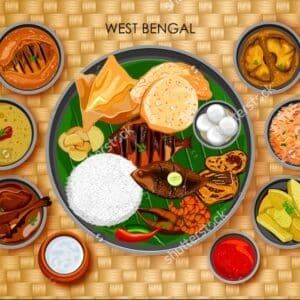
Bengali traditional food is not just a cuisine; it’s a reflection of the vibrant culture, history, and geography of Bengal. The people of Bengal, residing in both India and Bangladesh, have a deep connection to their food, which forms a significant part of their daily lives and celebrations. The cuisine also makes use of a wide variety of fresh ingredients, from rice and fish to vegetables and aromatic spices.
In this article, we will take a closer look at Bengali traditional food, its key components, iconic dishes, and the significance of food in Bengali culture. Whether you’re a food enthusiast or someone looking to explore new culinary experiences, this article will offer you a comprehensive guide to the world of Bengali cuisine.
The Key Ingredients of Bengali Traditional Food
The essence of Bengali traditional food lies in its simplicity, yet rich and complex flavors. Let’s look at some of the key ingredients that make Bengali traditional food so unique:
- Rice: Rice is the foundation of every Bengali meal. It is often consumed in large quantities and forms the base for many dishes. It can be served plain, as part of bhoger khichuri (a lentil and rice dish), or with rich gravies and curries. The importance of rice in Bengali traditional food cannot be overstated, as it is the essential companion to most meals.
- Fish: As Bengal is home to many rivers and water bodies, fish holds a central place in Bengali traditional food. Fish like hilsa, rohu, and katla are commonly used in Bengali cooking. Iconic dishes like machher jhol (fish curry) and ilish bhaja (fried hilsa fish) highlight the region’s love for seafood.
- Mustard Oil: Mustard oil is another crucial ingredient in Bengali traditional food. It is used extensively for cooking, providing a distinctive sharp flavor that enhances the overall taste of dishes. Its strong aroma and deep flavor make it a staple in Bengali kitchens.

Iconic Dishes in Bengali Traditional Food
Some of the most iconic dishes include:
1. Shorshe Ilish (Hilsa Fish in Mustard Sauce)
Arguably the most famous dish in Bengali cuisine, shorshe ilish features hilsa fish cooked in a mustard paste, with a few green chilies for heat and mustard oil for added flavor. The mustard sauce gives the fish a sharp, tangy flavor, perfectly complementing the delicate taste of the hilsa.
2. Machher Jhol (Fish Curry)
Made with fish like rohu or katla, this dish features a tomato-based gravy seasoned with turmeric, cumin, and coriander.
3. Aloo Posto (Potatoes with Poppy Seeds)
For those who enjoy vegetarian fare, aloo posto is a quintessential Bengali dish. It is typically paired with steamed rice and lentils, offering a comforting and wholesome meal. Aloo posto is a classic example of the balance of flavors that characterizes Bengali traditional food’s.
4. Chingri Malai Curry (Prawn Coconut Curry)
Chingri malai curry is a rich and luxurious dish made with prawns and coconut milk. The creamy curry, flavored with aromatic spices and mustard oil, is a favorite during festive occasions. The sweetness of the coconut milk perfectly balances the heat from the green chilies and the spices, creating a deliciously complex dish that is a highlight of Bengali traditional food’s.
5. Mishti Doi (Sweetened Yogurt)
No article on Bengali traditional food’s would be complete without mentioning desserts. Mishti doi is a sweetened yogurt dish that is a true Bengali classic. It is made by caramelizing jaggery and mixing it with yogurt, resulting in a creamy and sweet dessert.
The Role of Bengali Traditional Food in Festivals and Celebrations
Food holds a special place in Bengali culture, especially during festivals and celebrations. During major festivals like Durga Puja, Poila Boishakh (Bengali New Year), and Diwali, food plays a central role in bringing people together and marking the significance of the occasion.
From bhoger khichuri to mutton curry and rosogolla, the feast is an important part of the religious and cultural observance.
The Influence of Bengali Traditional Food on Global Cuisine
Over the years, Bengali traditional food’s has gained recognition beyond the borders of Bengal. The rise of Indian and Bangladeshi restaurants worldwide has introduced dishes like shorshe ilish, machher jhol, and mishti doi to international audiences. Moreover, the unique use of mustard oil, fish, and spices in Bengali cooking has influenced other regional cuisines, making Bengali traditional food a global culinary treasure.




